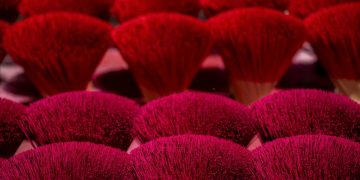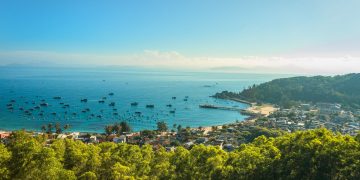Boi Khe Pagoda is an ancient wooden temple, one of the most beautiful pagodas in the North. The pagoda worships Duc Boi Saint, aka General Nguyen Dinh An, who defeated the northern invaders.

The pagoda, located in Boi Khe hamlet, Tam Hung commune, Thanh Oai district, Hanoi, was founded in 1338 under the reign of King Tran Hien Tong. Boi Khe pagoda was restored and expanded in 8 periods under the reign of Le So, Mac, Le Trung Hung, and Nguyen. The current architecture mainly retains its appearance since the restoration of the late 18th century.

The layout of the pagoda is following “tien Phat, hau Thanh” (the front area is dedicated to Buddha and the rear area to saints” that consists of the front hall, central hall and back hall.

The front hall has 5 compartments and 2 wings, the veranda is based on bluestone pillars with many sentences praising the pagoda’s scene. The front and central halls were built in the shape of the Chinese script of “Guo”, whereas, the hall and the area for worshiping deities form into the Chinese script of “Guo”. All the architectural works are arranged symmetrically on the two sides of the main axis.

In particular, Boi Khe pagoda still retains its unique architecture, the wooden architectural patterns of 4 gods.



In the yard of Boi Khe pagoda, in the front hall, there is a large stone wall with motifs typical of Mac reign art. The decorative bricks on the front hall’s porch are terracotta carpentry tiles, engraved with many mascot figures, and are also thought to be of Mac art. There are even traces of the Tran dynasty in wood carvings such as dragon heads carved in the porch.

The large rock on the temple grounds.

The decorative bricks on the front hall’s porch are carved with many mascot figures and are also thought to be of Mac art.

The post hall worships the Duc Boi Saint, who was enlightened in the Tran dynasty, said to have magical power.

On both sides of the front hall, there are two rows of corridors surrounded by vivid statues. It has 52 Buddhist statues, notably the Dharma protectors, Yama, the Nine Dragons, the Three Buddhas, etc. Among them, the Quan Am Bodhisattva statue with 12 hands is considered the most beautiful.



The Triple Jewel is also known as the Upper Palace, worshiping Buddha, Dharma, and Sangha, composed of 4 rows of columns, each of 4 pieces, the porch has six roof support columns, divided into seven spaces. The two rafters have the style of Tran dynasty art.


The steeple above Tripple Gates is where stores two large bells. The bells with 60 cm diameter, 1 m high, were cast and hung on the Tripple Gates in the Thieu Tri year (1844).

The Ngu Mon (the gate with 5 doors) of the pagoda.

Another view of Ngu Mon on the trail of the ancient Do Dong river.

Between Ngu Mon and Tam Quan is the road to Boi Khe village. On the left of the street, there is a stele house with a stone tablet carved from the Tran dynasty to record the merit of the Saint Duc Boi. Every year, the pagoda opens on the 12th of the first lunar month to offer worship to Duc Boi Saint. After that, there is a ceremony to pray for rain, perhaps one of the oldest practices of wet rice farmers but still preserved.

The temple is located in an area of about 5,000 m2. In front of the five-door gate looking to the west, there are the old banyan tree and five tomb towers of the lost abbots.
Huu Nghi: https://dantri.com.vn/du-lich/khong-gian-thanh-tinh-tai-ngoi-chua-go-600-nam-tuoi-20200412031144191.htm

















